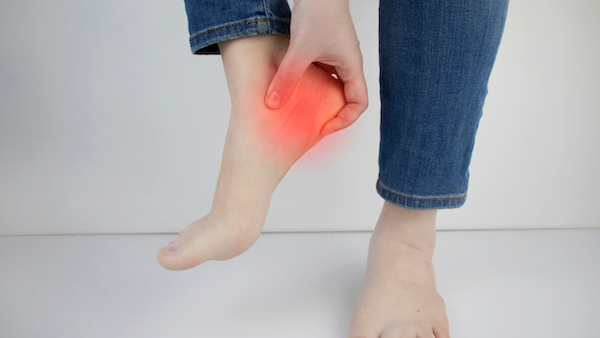Why Does My Heel Hurt First Thing in the Morning?
Plantar fasciitis is a common reason for nagging heel pain. It happens when the plantar fascia – a strong band of tissue that connects the heel bone to the toes – becomes irritated or inflamed. This tissue supports the arch of the foot, and repeated strain can cause tiny tears, leading to pain and stiffness.
Signs That Point to Plantar Fasciitis
People often describe the pain as:
- A stabbing sensation in the heel, especially with the first steps after waking up
- Discomfort that returns after long periods of standing or after exercise
- Stiffness in the arch that eases with gentle movement but comes back at rest
What Triggers the Pain?
Plantar fasciitis develops when too much stress is placed on the heel and arch. Risk factors include:
- Standing or walking long hours on hard ground
- High-impact sports like running or basketball
- Flat feet, high arches, or unusual walking patterns
- Tight calf muscles or Achilles tendons
- Shoes without enough support or cushioning
- Carrying extra weight that increases strain on the foot
How Doctors Confirm the Diagnosis
An orthopaedic surgeon usually starts with a simple history and physical exam of the heel and foot. In most cases, this is enough. If symptoms are stubborn or unusual, imaging such as X-rays or MRI scans may be ordered to rule out other causes like fractures or arthritis.
Easing the Pain: What Treatment May Involve
Treatment for plantar fasciitis focuses on calming inflammation, reducing stress on the foot, and helping the tissue heal. Options may include:
Lifestyle and Self-Care
- Resting and avoiding painful activities
- Ice packs to cool down inflammation
- Gentle stretching for the calves and plantar fascia
Support for the Foot
- Proper shoes with cushioning and firm arch support
- Orthotic inserts or heel cups for extra protection
Medications
- Anti-inflammatory medicines to reduce pain
Physiotherapy
- Guided stretches and strengthening exercises
- Techniques such as taping or ultrasound therapy
Injections
- Steroid injections or other therapies may be considered if pain is persistent
Surgical Solutions
- Surgery is rarely needed, but may be an option if months of non-surgical care do not bring relief
Can Plantar Fasciitis Come Back?
Most people improve with consistent care over a few months, but the condition can return if stress on the foot continues. Simple steps can lower the risk:
- Choose supportive footwear
- Stretch calves and feet daily
- Avoid walking barefoot on hard floors
- Keep a healthy weight
- Increase exercise intensity gradually
When It’s Time to See a Specialist
Heel pain that lingers for weeks, gets worse with time, or interferes with daily life should not be ignored. Early medical care can prevent the problem from becoming long-term.
Take the Next Step Toward Relief
If you are struggling with heel pain or suspect plantar fasciitis, our team at Mash Spine & Orthopaedics is here to help. A detailed consultation will allow our orthopaedic surgeon to guide you on the most suitable treatment for your needs.
- Farrer Park Medical Centre, 1 Farrer Park Station Road, #07-14 Connexion, Singapore 217562
- Call +65 6518 9545
- Book your Appointment Today
Plantar Fasciitis Treatment – At a Glance
What it is:
- Inflammation of the band of tissue that supports the arch of the foot
Key Symptoms:
- Sharp heel pain (especially in the morning)
- Stiffness in the arch
- Pain after long standing or exercise
Who’s at risk:
- Runners, athletes, and people on their feet for long hours
- Those with flat feet, high arches, or tight calf muscles
- People who wear unsupportive footwear
Treatment Options:
- Rest, ice, stretching
- Supportive footwear or insoles
- Physiotherapy
- Medications or injections
- Surgery (rare)





